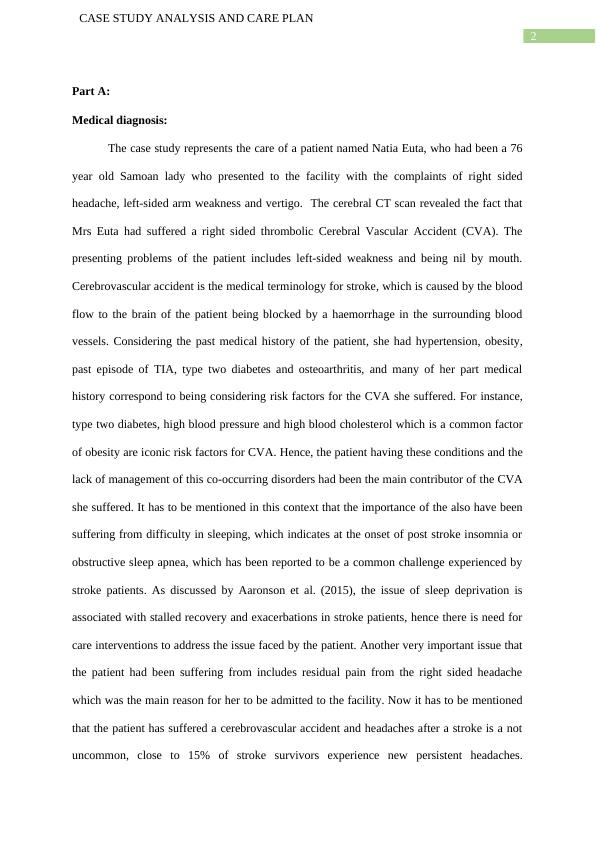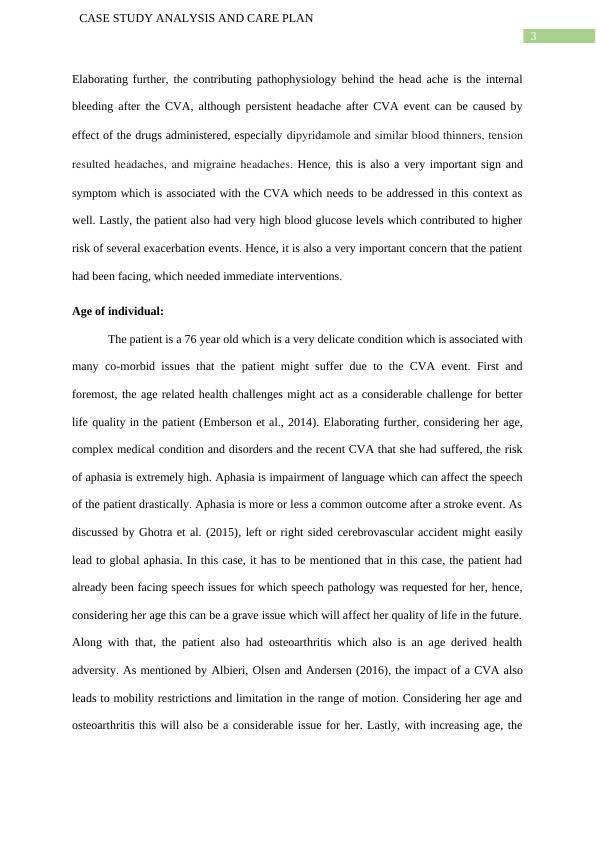Case Study Analysis and Care Plan
Nursing Care Plan using the Clinical Reasoning Cycle
12 Pages2675 Words120 Views
Added on 2023-05-30
About This Document
This case study analysis and care plan discusses the medical diagnosis, age of individual, preparation for procedures, privacy and dignity, and risk identification for a patient who suffered a Cerebral Vascular Accident (CVA). The patient had several co-occurring disorders, including hypertension, obesity, past episode of TIA, type two diabetes, and osteoarthritis, which contributed to the CVA. The patient also suffered from residual pain, difficulty sleeping, and high blood glucose levels. The care plan includes interventions for pain management, insomnia, and blood glucose level control.
Case Study Analysis and Care Plan
Nursing Care Plan using the Clinical Reasoning Cycle
Added on 2023-05-30
ShareRelated Documents
End of preview
Want to access all the pages? Upload your documents or become a member.
A Case Study on-CEREBROVASCULAR ACCIDENT (CVA)
|12
|749
|387
Pathophysiology and pharmacology of cerebrovascular accident: A case study
|10
|2676
|244
Exploration of a Pathophysiology Case
|8
|2386
|201
Cerebrovascular Accident and Nursing Care
|5
|539
|140
Understanding Cerebrovascular Accident: Causes, Symptoms, and Interventions
|13
|2343
|79
Essay on The Nursing Services
|8
|2743
|27




